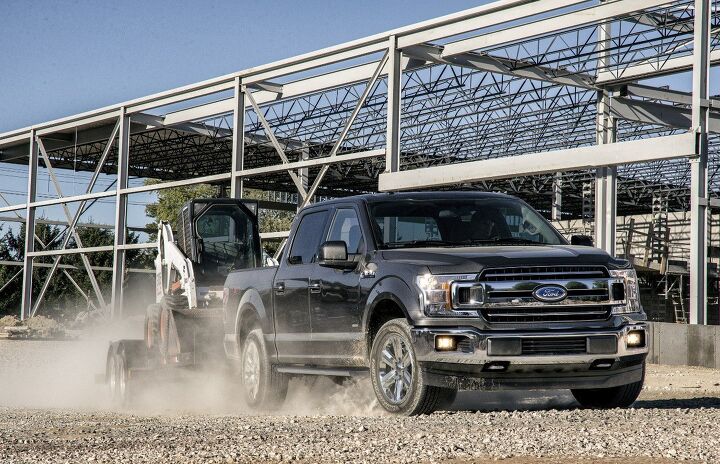#2018FordF-150
Despite Technology Boost, Ford F-150's New Base Engine Still Guzzles More Gas Than the Upgrade
Think of the Ford F-150 pickup and one’s mind immediately turns to an excellent pair of EcoBoost V6 engines with 2.7 and 3.5 liters of displacement. And why wouldn’t you? Together, Ford’s twin-turbocharged V6 twins make up three-quarters of the model’s engine share. These beauties are the last word in full-size pickup torque, though the 2.7-liter is a wanderer that finds deserving homes in such models as the Ford Edge, Lincoln MKX, and Ford Fusion Sport.
For 2018, both EcoBoost engines see some refinements, but buyers of F-150 XL and XLT pickups won’t see either if they leave those option boxes unchecked. In a bid to increase fuel efficiency across the lineup, 2018 sees the introduction of a naturally aspirated 3.3-liter V6 in low-rung trims, replacing the previous 3.5-liter unit.
There’s no shortage of technology at work with the new 3.3, but it can’t match the fuel economy of the closest available engine upgrade.
Ford F-150's V8 Market Share Shrinks to Just a Quarter
As Ford prepares to launch the refreshed 2018 F-150 with a thoroughly updated engine lineup, Blue Oval product planners expect 2017’s engine selection to continue. That means the 5.0-liter V8, while mildly upgraded for 2018, will be found under the hood of only one in four 2018 F-150s.
The transition has been a rapid one. Twin-turbocharged EcoBoost V6s were surprisingly effective when, in early 2011, 35 percent of F-150 buyers made the leap from conventional naturally aspirated powerplants. Three years later, when Ford was planning to expand the F-150’s EcoBoost lineup with a less costly 2.7-liter variant, Ford expected 56 percent of F-150 buyers to choose one of the turbocharged units.
Heading into 2018, Ford’s truck marketing manager Todd Eckert tells Automotive News that the 2.7-liter EcoBoost will be the most popular F-150 engine followed by the 3.5-liter EcoBoost. Together, they’ll claim 65 percent of all F-150 sales, leaving 10 percent for the new entry-level 3.3-liter, and roughly 25 percent for the five-point-oh.
So how many V8 engines is that?
Ford Announces Improved Hauling and Long Haul Economy for the 2018 F-150
As promised, Ford is updating the engine lineup in the company’s best-selling F-150 for the 2018 model year, providing improved fuel economy and maximum towing capacity across the board.
While it’s always a good idea to hold out a bit of skepticism until review time, Ford previously low-balled its economy estimates for the F-Series — as such, we’re working with some previously existing good faith.
News has been trickling out regarding Ford’s upcoming styling tweaks, advanced safety tech, and a powerful new diesel engine for the 2018 model. We also knew the F-150’s gas engines would be getting upgraded specs and, while some alterations are minor, there are a few big numbers worth disclosing.
And they have little to do with the 5.0-liter V8.
NAIAS 2017: 2018 Ford F-150 Shows Off New Face, Diesel and Gas V6 Engines
Being on top doesn’t mean a company can take its customer base for granted. Not satisfied with basking in the goodwill generated by the F-150’s best-selling status, Ford Motor Company has unveiled a refreshed 2018 model and a host of new hardware upgrades.
While the upcoming F-150 sports an evolutionary facelift, it’s what’s under the hood that stands to tempt a new range of buyers.



















Recent Comments